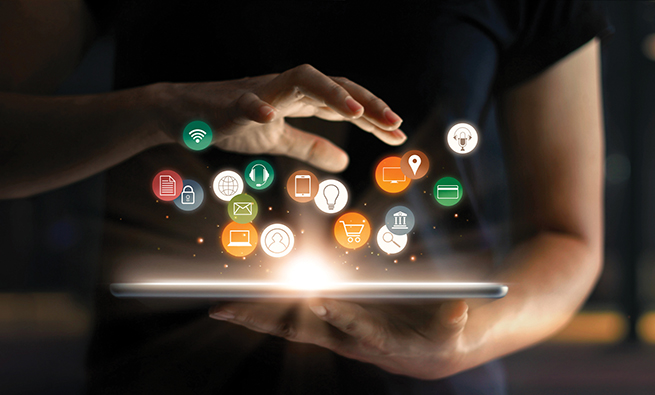The way we communicate has undergone a tremendous transformation over the past few decades, thanks to advancements in technology. The emergence of digital communication channels has opened up new possibilities for people to connect and communicate with each other, breaking down barriers of distance and time. Here’s a look at how technology is changing the way we communicate in the digital age.
- Instant Messaging
Instant messaging has become an integral part of modern communication, with messaging apps like WhatsApp, Facebook Messenger, and WeChat allowing people to stay in touch with friends and family around the world. Unlike traditional messaging methods, which can take days or even weeks for a message to be delivered, instant messaging provides an immediate, real-time connection.
- Social Media
Social media platforms like Facebook, Twitter, Instagram, and LinkedIn have become powerful tools for communication and networking. These platforms allow people to connect with others who share their interests and passions, and share information and ideas on a global scale.
- Video Conferencing
Video conferencing has become an essential tool for businesses and individuals alike, allowing people to connect face-to-face with others from anywhere in the world. Platforms like Zoom, Skype, and Google Meet have made video conferencing more accessible and user-friendly than ever before, enabling people to collaborate and communicate in real-time without the need for travel.
Although email is a relatively old technology, it remains one of the most popular methods of communication in the digital age. Email allows people to communicate with each other asynchronously, sending messages that can be read and responded to at the recipient’s convenience. It’s also a useful tool for sharing files and documents securely.
- Voice Assistants
Voice assistants like Amazon’s Alexa, Google Assistant, and Apple’s Siri have become increasingly popular in recent years, providing users with a hands-free way to access information and communicate with their devices. Voice assistants can be used for everything from making phone calls and sending messages to playing music and controlling smart home devices.
- Augmented Reality and Virtual Reality
Augmented reality and virtual reality technologies are still in their early stages, but they have the potential to revolutionize the way we communicate and connect with each other. Augmented reality can overlay digital information onto the real world, while virtual reality can create entirely immersive digital environments, providing new ways to experience and interact with each other.
- Collaborative Tools
Collaborative tools like Google Docs, Trello, and Slack are increasingly popular in workplaces, enabling teams to work together more efficiently and effectively. These tools provide a central platform for sharing information, communicating with team members, and tracking progress on projects.
In conclusion, technology has transformed the way we communicate in the digital age, opening up new possibilities for connecting and collaborating with each other. From instant messaging and social media to video conferencing and voice assistants, the digital world has provided us with a wealth of communication tools and channels. As technology continues to evolve, we can expect even more innovative and exciting ways to communicate and connect with each other in the future. However, it’s important to remember that despite the many benefits of digital communication, it’s still essential to maintain face-to-face connections and build real-world relationships with the people around us.







Be First to Comment